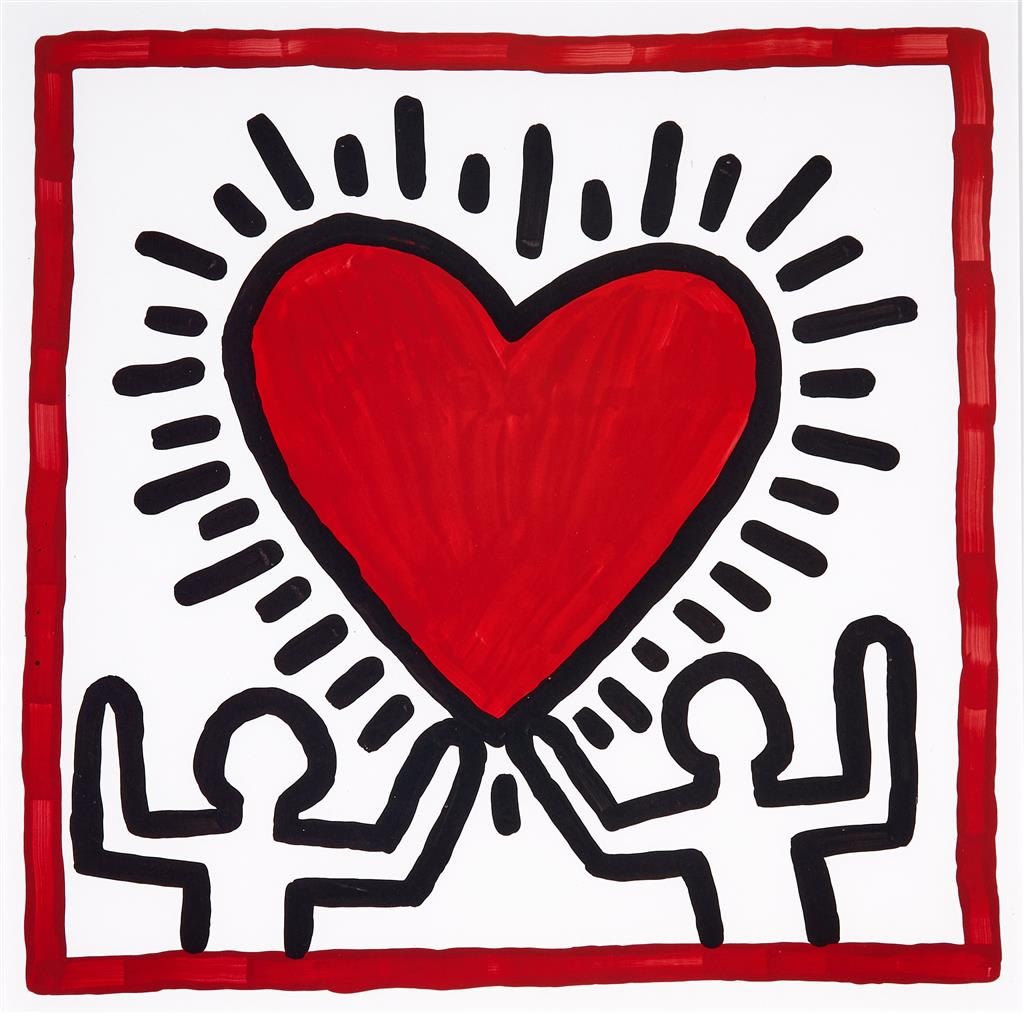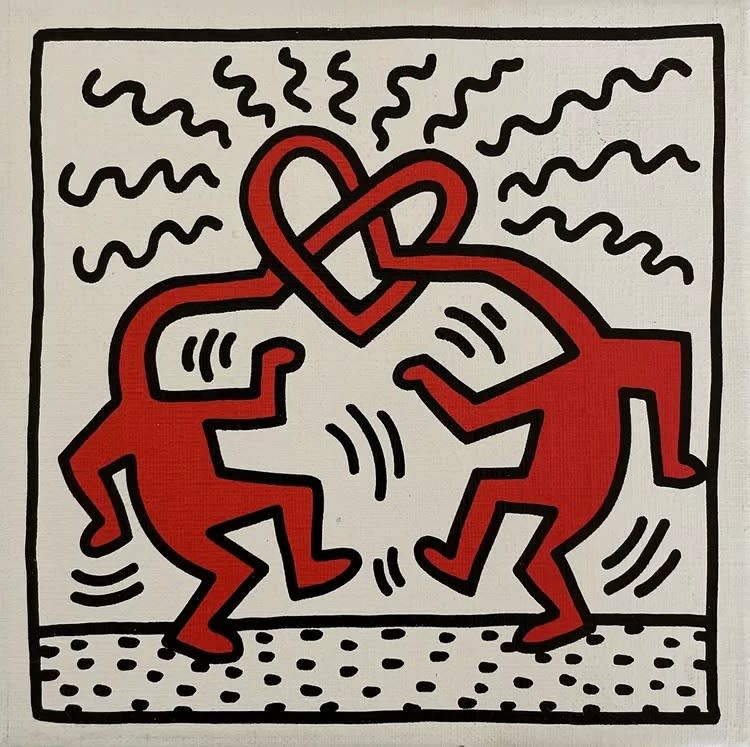
Born in 1958 in Pennsylvania, Haring moved to New York City in the late 1970s to pursue a career in art. Influenced by graffiti culture and the vibrant street art scene of the city, Haring developed a distinctive visual language characterised by bold lines, bright colours, and playful imagery. His art often conveyed social and political messages, addressing issues such as AIDS awareness, racism, and LGBTQ+ rights.
At the “heart” of Haring's artistic vocabulary was the love heart, a motif that he employed in various forms throughout his career. Whether it was a standalone heart or incorporated into larger compositions, the love heart became synonymous with Haring's optimistic and inclusive vision of the world. For Haring, the heart symbolises love in its purest form – love for oneself, love for others, and love for humanity as a whole.
In addition to its aesthetic appeal, the love heart served as a powerful tool for communication in Haring's art. Its simplicity made it instantly recognizable, allowing Haring to convey complex emotions and ideas with clarity and immediacy. Whether he was addressing issues of love and compassion or confronting societal injustices, the love heart served as a universal symbol that transcended language and cultural barriers.

"Untitled," also known as "Be Mine," is a screenprint was created in1987, encapsulating one of art's timeless themes—love—interpreted through Keith Haring's distinct visual language. Despite its modest size, the artwork confronts this profound theme with Haring's characteristic flair for innovation.
In the heart of the composition, a bold red heart radiates like the sun, illuminating two figures standing side by side amidst an otherwise monochromatic backdrop. With minimal scenery, Haring's artwork exudes a striking vividness through its simplistic yet impactful graphic style. While hearts traditionally symbolise romantic love, Haring imbues them with broader connotations, representing the essence of humanity and camaraderie. The figures depicted, devoid of gender distinctions, evoke a sense of universal affection and friendship towards fellow beings. Throughout Haring's body of work, hearts serve as symbols of positivity and resilience in the face of adversity, evolving in meaning across various contexts.
Hearts, as depicted by Haring, transcend cultural boundaries, resonating with audiences of all ages. Testament to Haring's unique artistic vision, he redefines the symbol, establishing the iconic "Haring heart" as a recognizable artistic emblem in its own right.

"Untitled," created in 1988, is a rare print which further exemplifies Haring's exploration of the heart motif. Central to the composition are two figures merging into one, their limbs intertwined, culminating in a single head adorned with Haring's radiant heart symbol. This joyous and vibrant depiction can be interpreted as representing unity and friendship through one of the most universally understood symbols.
In Haring's artistic universe, human figures transcend physical boundaries, morphing and intertwining to create dynamic and graphic compositions. This visual language not only lends dynamism to Haring's art but also underscores the concept of unity. Haring's philosophy of art, rooted in humanism, highlighting the transformative power of drawing, bridging the gap between individuals and the world, imbued with a sense of magic.

"Untitled (Heart)," from 1989, continues Haring's exploration of the red heart motif. In this dynamic composition, two figures converge to form a heart shape at the centre, symbolising unity and humanity in a playful and endearing narrative. Haring's imagery, both universally comprehensible and uniquely his own, radiates with energy and joy, conveyed through expressive line work and vibrant colours.
Discover our collection of Keith Haring original prints for sale and contact Andipa Editions via sales@andipa.com or call +44 (0)20 7589 2371 for further details.